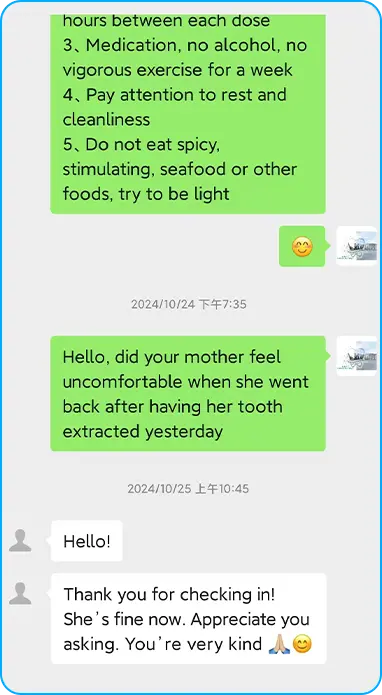Below, we will introduce you to the related content of "Not all toothaches are the same, there are different types of toothaches!". This will take you about two to three minutes to browse. Thank you for reading.
Primary pain refers to the pain caused directly by teeth and gums, including:
1. Toothache caused by dental caries
2. Toothache caused by periodontitis
Concomitant pain refers to the pain caused by other diseases or conditions of the body, including:
1. Painful gingivitis (commonly known as wind-fire toothache or acute gingivitis)
2. Neuralgia.
不同种牙痛又有哪些症状呢
Toothache caused by dental caries
This type of toothache is commonly known as pulpitis or apical periodontitis. The symptoms include sensitivity to sweet foods, dairy products, cold or hot substances, especially when there is already a cavity in the tooth. The pain is described as drilling into the bone and usually does not have any gum reactions. This type of toothache generally worsens at night and when lying down compared to sitting up.
Toothache caused by periodontitis.
Patients with periodontitis may not necessarily experience toothache, but rather a result of gum recession. Therefore, middle-aged and elderly patients are more common, and the range of toothache varies. Some people may only experience pain in one tooth or two to three adjacent teeth, while others may experience pain in a large area of the upper and lower jaws. The reason for this phenomenon is that the pain caused by periodontitis is not caused by the teeth themselves, but by an anaerobic bacteria in the oral cavity that triggers inflammation and congestion of the internal gums, stimulating the dental nerves and causing pain (especially sour pain), which is directly exacerbated during chewing. In addition, this type of toothache does not exhibit redness and swelling of the gums.
Red swollen tooth pain
This type of toothache usually occurs in the gums of the upper and lower molars, and the onset is sudden. It is also known as acute gingivitis, commonly known as "wind-fire toothache". The gums become severely swollen, and the main pain point is the gums, which are very painful with even slight touch. It is so uncomfortable that not only chewing food, but even opening the mouth can be painful, worse than true toothache. In severe cases, there may be symptoms such as sore throat, enlarged lymph nodes, fever, and constipation or difficulty with bowel movements. The tongue coating is thick, dry or yellow, and the tongue is bright red in color. From these series of symptoms, it can be seen that acute inflammation of the gums is caused by a systemic illness (commonly known as "excessive internal heat"), and the underlying cause of the disease is not caused by the gums or teeth in the oral cavity, so this type of toothache is also called a complication of toothache.
neuropathic toothache
This type of toothache is commonly known as "phantom tooth pain." It is not directly related to the gums or teeth, but rather is a result of nerve hypersensitivity in the tooth root caused by other bodily factors. Causes of this type of toothache can include staying up late, other issues with the senses, and headaches, and it is therefore classified as a secondary toothache.
























